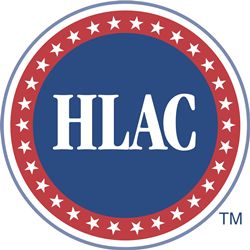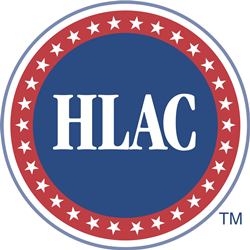
“The healthcare textile is the one common factor of every patient’s experience in his or her encounter with a hospital or senior living facility.”
PLAINFIELD, Ill. (PRWEB)
November 11, 2020
The Healthcare Laundry Accreditation Council (HLAC) says the laundry practices of nursing homes and senior living communities deserve a bigger role in infection control strategies, and that its standards provide viable safeguards to those facilities looking to tackle pandemic challenges and beyond.
“We’re urging nursing homes, veterans’ homes, assisted-living and similar long-term care facilities to have a look online at our readily available standards and to consider getting HLAC accredited in the same manner as many of the leading healthcare laundries in Canada and the USA,” said Linda McCurdy, HLAC board president. “HLAC accreditation is available, upon inspection, to senior-living facilities that launder on-premise, or for their outsourced laundry.”
HLAC is a nonprofit organization that inspects and accredits laundries processing textiles for hospitals, nursing homes and other healthcare facilities. There are currently more than 160 HLAC-accredited laundries in Canada and the USA. Accreditation affirms that a laundry organization that processes healthcare linens has successfully passed an inspection of the following: its facility, policies and procedures, training programs, and its relationships with its healthcare customers. HLAC’s accreditation standards have been developed based on federal regulations and guidelines as well as industry best practices.
HLAC FEATURED IN INDUSTRY TRADE JOURNALS
HLAC figures prominently in two recent articles published in industry trade journals, Healthcare Hygiene Magazine (HHM) and McKnight’s Long-Term Care News, where McCurdy and former HLAC Board President Gregory Gicewicz examine laundry’s omission in the discussion about infection control solutions among senior living facilities.
In her HHM column, “As Senior Living Facilities Weigh Infection Control Solutions, Laundry Precautions Need to Be Part of the Discussion,” McCurdy writes: “Inexplicably, what’s notably absent in the search for solutions is any significant discussion of healthcare textiles. Inexplicable, because the healthcare textile is the one common factor of every patient’s experience in his or her encounter with a hospital or senior living facility. Indeed, in virtually every facility, every patient’s skin will touch a sheet, towel, bed pad, washcloth, bedspread, blanket; and every employee’s skin will touch scrubs, isolation gowns, lab coats, and the list goes on.”
In the McKnight’s article, “Laundry Practices Often Overlooked in Infection Control, Accreditor Says,” Gicewicz notes: “We don’t see the same levels of rigor and same adherence to standards in the long-term care facilities that we do in the acute-care facilities.”
The articles offer discussion of several useful infection prevention solutions available from the HLAC standards document. These include maintaining functional separation, sorting soiled textiles into appropriate wash loads by classification, preventing negative air flow, and regular monitoring.
In McKnight’s, HLAC notes: “If staff members get the steps right, then they will end up with hygienically clean laundry. If not, there may be problems.”
In HHM, McCurdy concludes: “Facilities that have either on-premise or outsourced laundries must be cognizant of all of the issues like those aforementioned. A good place to start is to ask the simple question, ‘Is our laundry accredited?’ The willingness to enforce safety measures to produce hygienically clean healthcare textiles will make all of the difference in the world.”
Share article on social media or email:

